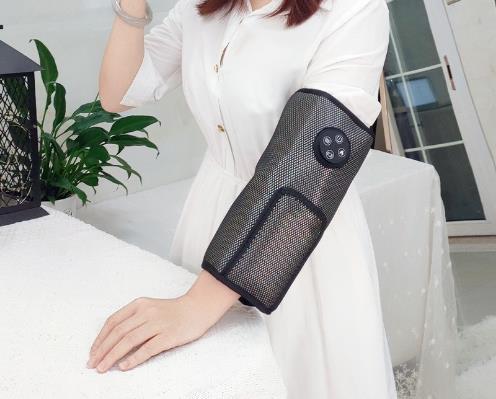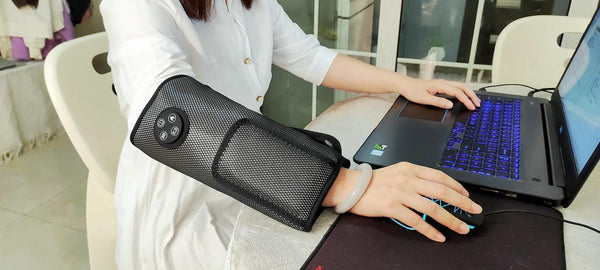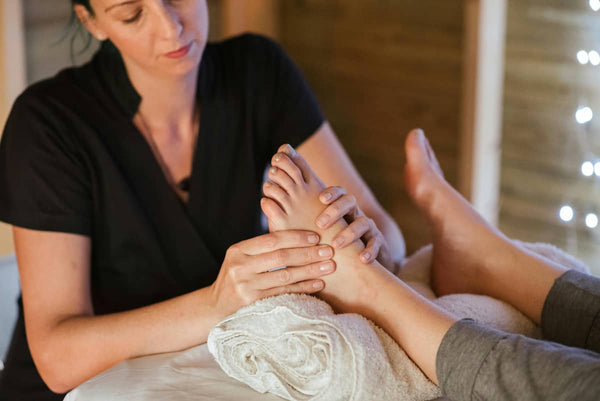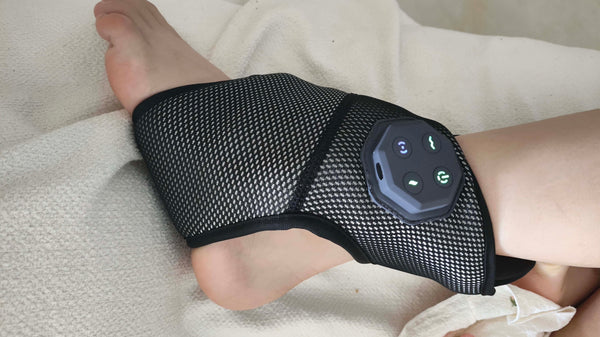
You’ve just crushed a new personal best in the gym. Your muscles are singing a song of fatigue and triumph, and you know that smart recovery is just as crucial as the workout itself. You book a deep tissue massage to work out the knots and speed up your repair process. The session is fantastic. But then comes the moment of truth at the payment counter: the screen flips around with tip suggestions. You freeze. What’s the right call for a fitness enthusiast who sees massage as part of their training regimen? This dilemma is why many athletes now rely on a portable massager for daily relief, but for those professional tune-ups, the tipping question remains.
Let's be real, this is a common point of confusion that can add unnecessary stress to what should be a restorative experience. Tipping etiquette for masseurs can feel like a gray area, full of conflicting advice. In this guide, we're going to cut through the noise. We’ll break down the different perspectives so you can make a confident choice every time, and even explore how to take complete control of your muscle recovery with your own portable massager, sidestepping the tipping dilemma altogether for your day-to-day needs.
The Gym-Goer's Standard: Why 20% is Often the Go-To Tip
For many, the simplest answer is to treat a massage like any other personal service. The widely accepted standard in the service industry, particularly in the United States, is a 20% tip. This perspective argues that a massage therapist is a skilled professional providing a physically demanding service that directly contributes to your well-being and athletic performance. Think of it as an investment in your body's maintenance crew, a complement to the work you do with tools like a portable massager at home. A good therapist doesn't just rub your back; they apply deep knowledge to get you back in the game faster.
From a fitness coach's viewpoint, a quality massage is a powerful tool. When a therapist effectively reduces your DOMS or releases a trigger point, their service has tangible value for your next training session. In this context, a 20% tip is seen as acknowledging that expertise. It's a way of saying, "Thank you for helping me achieve my fitness goals." While many athletes use a portable massager for maintenance, a professional's hands-on work deserves recognition. While specific numbers can vary, this is a really, really safe and appreciated baseline in most spa or wellness center settings.
- Acknowledge the Skill: Tipping recognizes the therapist's training, experience, and the customized care they provide, which goes beyond what a typical portable massager can offer.
- Factor in Physical Demand: Sports and deep tissue massages are physically taxing for the provider. The tip reflects appreciation for this intense labor.
- Build a Relationship: If you find a great therapist, consistent tipping helps build a strong professional relationship for those crucial pre-competition tune-ups.
The Game Changer: Does the Location Affect the Tip?
 Now, let's add a layer of complexity. Where you get your massage can significantly change the tipping equation. A common argument is that if the massage therapist owns their own private practice or clinic, a tip isn't necessarily mandatory. The logic here is that as a business owner, the therapist sets their own prices to cover all their costs and build in a profit margin. This is a very different model from a large spa, where the therapist may rely heavily on tips. This is a key reason why owning a portable massager offers such clarity—no hidden costs.
Now, let's add a layer of complexity. Where you get your massage can significantly change the tipping equation. A common argument is that if the massage therapist owns their own private practice or clinic, a tip isn't necessarily mandatory. The logic here is that as a business owner, the therapist sets their own prices to cover all their costs and build in a profit margin. This is a very different model from a large spa, where the therapist may rely heavily on tips. This is a key reason why owning a portable massager offers such clarity—no hidden costs.
This is different from a therapist working at a large spa or a fitness franchise, where they might only receive a fraction of the total price you pay. In those scenarios, tips are a vital part of their income. So, how do you navigate this? It's about context. If you're in a clinical setting, tipping may not be expected at all. If you're unsure, there’s no shame in asking the front desk discreetly about their policy. This direct approach clears up ambiguity, much like how a portable massager provides a clear, one-time cost for recovery.
Training Abroad? Navigating Global Tipping Cultures
For the fitness enthusiast who travels for competitions, this issue gets even more complex. Tipping is a deeply cultural practice. In the U.S., it’s standard, but in Japan, leaving a tip could be seen as an insult, as excellent service is part of the price. Having your own trusted portable massager can be a lifesaver in these situations, ensuring you have reliable recovery without navigating unfamiliar customs. It offers a consistent experience no matter where you are in the world.
Before you travel, a little prep work goes a long way. A quick internet search for "tipping etiquette for massage in [Country]" is a pro-level move that will save you from an awkward situation. This shows respect for local customs. But for your daily recovery grind, nothing beats the certainty of your own equipment. A reliable portable massager means you’re never caught off guard, allowing you to focus on your performance instead of worrying about local tipping norms after a hard training day.
The Ultimate Recovery Hack: Skip the Tip Debate Entirely
What if you could have on-demand muscle relief without ever thinking about tipping? This is where owning your recovery tools becomes a total game-changer. By making a one-time investment in a high-quality portable massager, you effectively solve the tipping problem for all your daily recovery needs. These fantastic handheld massagers put professional-grade percussion therapy right in your hands, offering a perfect solution for any athlete. The modern personal massager is a must-have piece of kit.
You can use a personal massager to warm up muscles, flush out lactic acid, or work on tight spots. The ability to have a portable massage session right in your gym bag is a strategic advantage. It allows you to be proactive about recovery, addressing tightness before it becomes a problem, all without booking an appointment or calculating a tip. A top-tier portable massager pays for itself after just a few uses. The value of a portable massage on demand cannot be overstated. These handheld massagers are simply indispensable for serious training. Every session with your portable massager is one less appointment you have to stress about.
How to Use Your portable massager for Peak Performance:
- Step 1: Choose the Right Attachment. Use larger heads for big muscle groups. Your portable massager should come with options for targeted relief.
- Step 2: Start Low and Slow. Always begin on the lowest speed setting. Let the portable massager float over the muscle; you don't need to apply excessive pressure.
- Step 3: Keep it Moving. Spend about 30-60 seconds on each sore area, moving the device slowly. This is the best way to get a great portable massage.
- Step 4: Breathe. Focus on your breathing to help your muscles relax. Using your portable massager should be a restorative, not stressful, experience.
Conclusion: Own Your Recovery
Navigating massage tipping doesn't have to be stressful. In most US settings, 20% is a solid benchmark. But always consider the context. The most powerful move is to invest in your own recovery. A portable massager is more than a device; it’s a tool that gives you control, consistency, and freedom from the recurring cost and confusion of tipping. The convenience of a portable massage at home is unmatched. Stop letting etiquette anxiety sideline your recovery. Invest in a quality portable massager, master your muscle care, and focus on what truly matters: getting stronger and hitting your next goal.
Frequently Asked Questions
What is a massage?
A massage is the practice of rubbing and kneading the body using the hands. During a massage, a trained therapist applies pressure to the muscles and joints to ease pain and reduce tension. For athletes, it's a vital recovery technique used to improve circulation and reduce muscle soreness, often supplemented by daily use of tools like a personal massager.
How to massage?
To perform a basic massage on someone, you typically use your hands to manipulate their soft tissues. Key techniques include long, gliding strokes, kneading the muscles, and applying deep pressure. The goal is to start gently and increase pressure as needed, always communicating to ensure comfort. This differs from a self-administered portable massage, which uses percussive force.
How to use a massager?
To use a portable massager or other electric device, start by selecting the appropriate attachment head. Turn the device on to its lowest setting and gently float it over the surface of the muscle for 30-60 seconds. You don't need to press down hard. Slowly move your portable massager across the muscle belly, avoiding bones and joints. Always listen to your body and stop if you feel any sharp pain. Proper use of handheld massagers is key to effective recovery.
This reply is generated based on currently verifiable public information. It is recommended to cross-check key content with authoritative sources.




0 comments